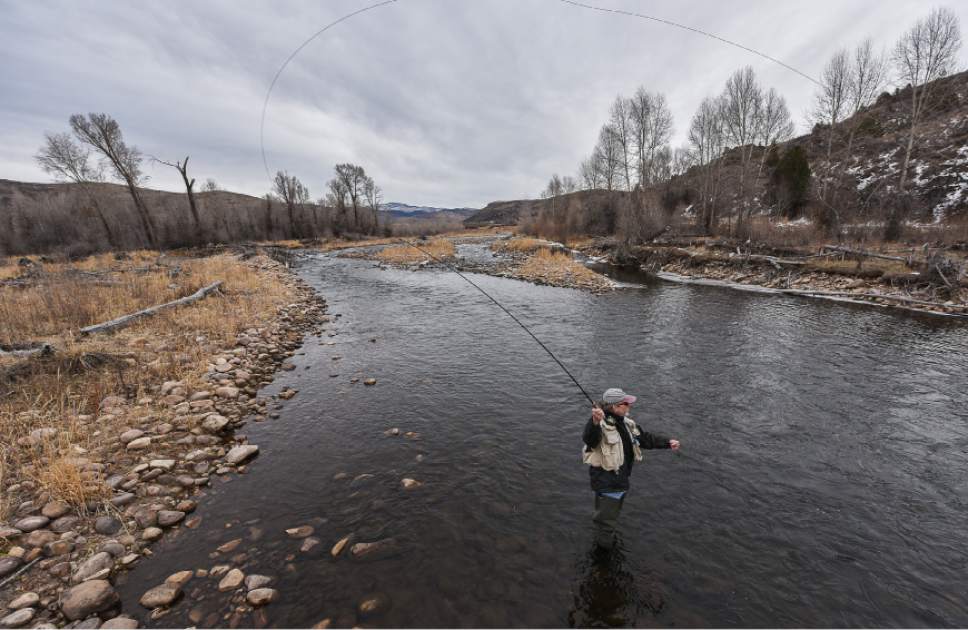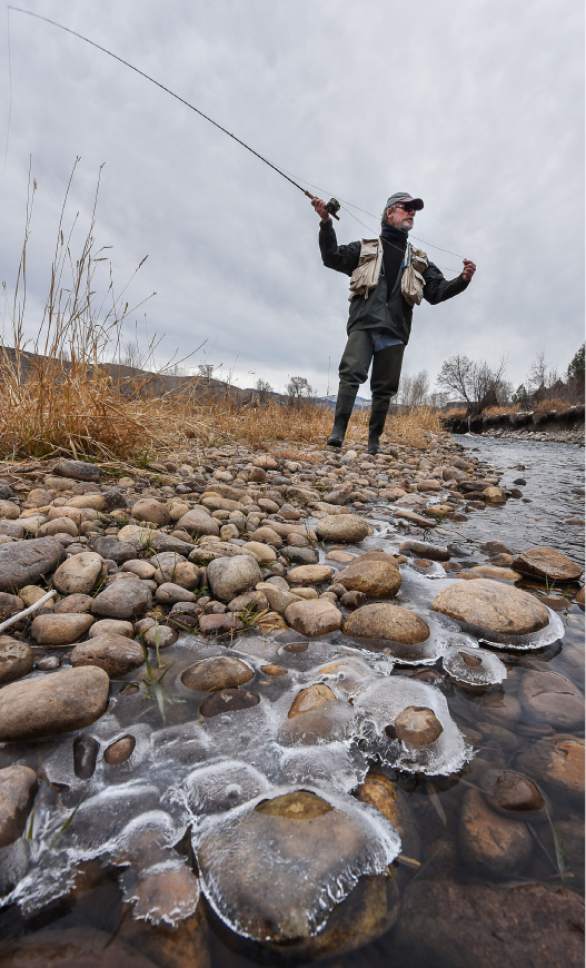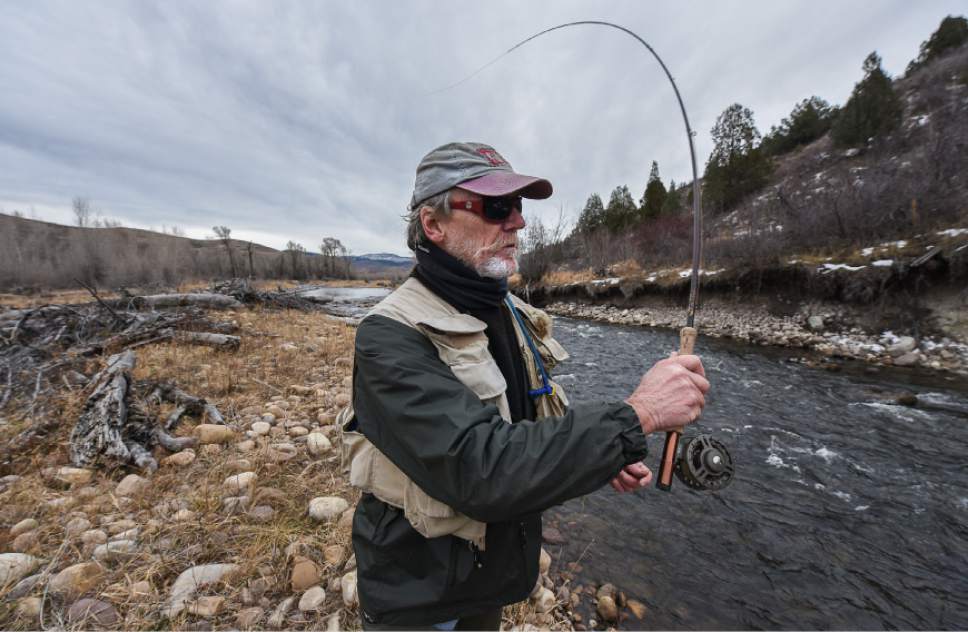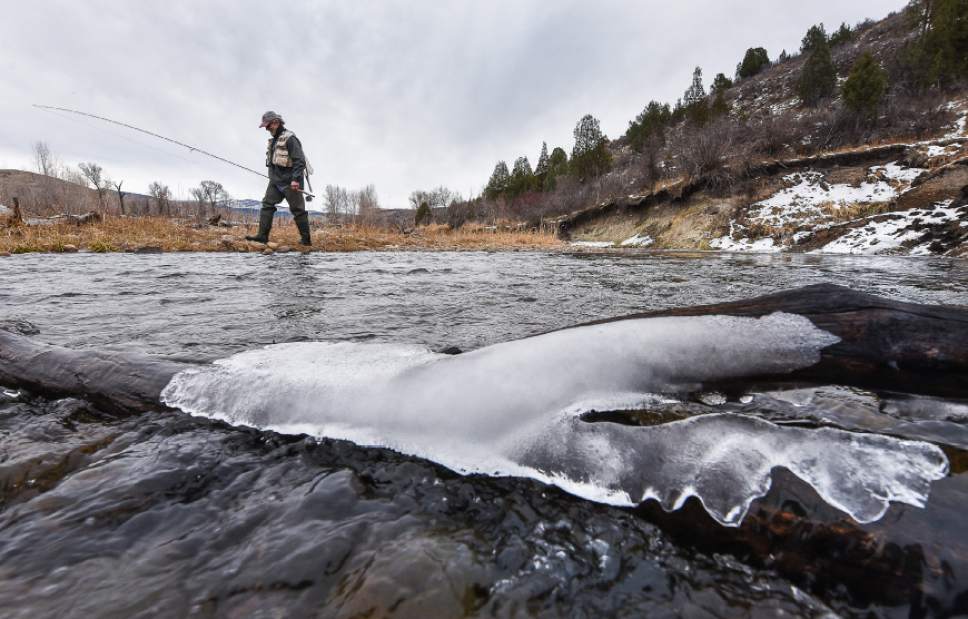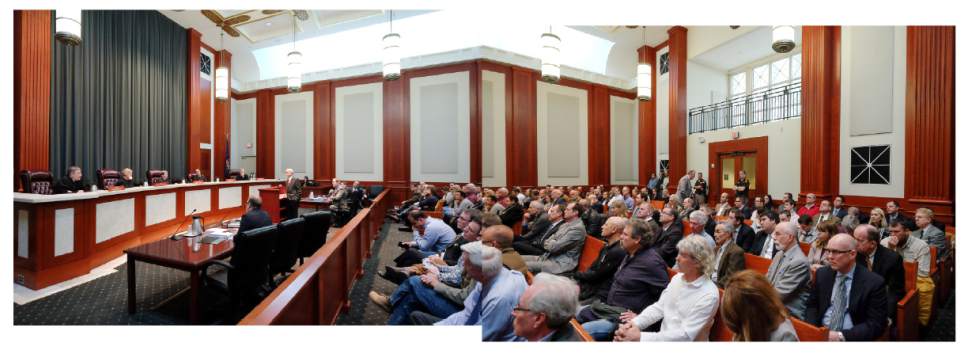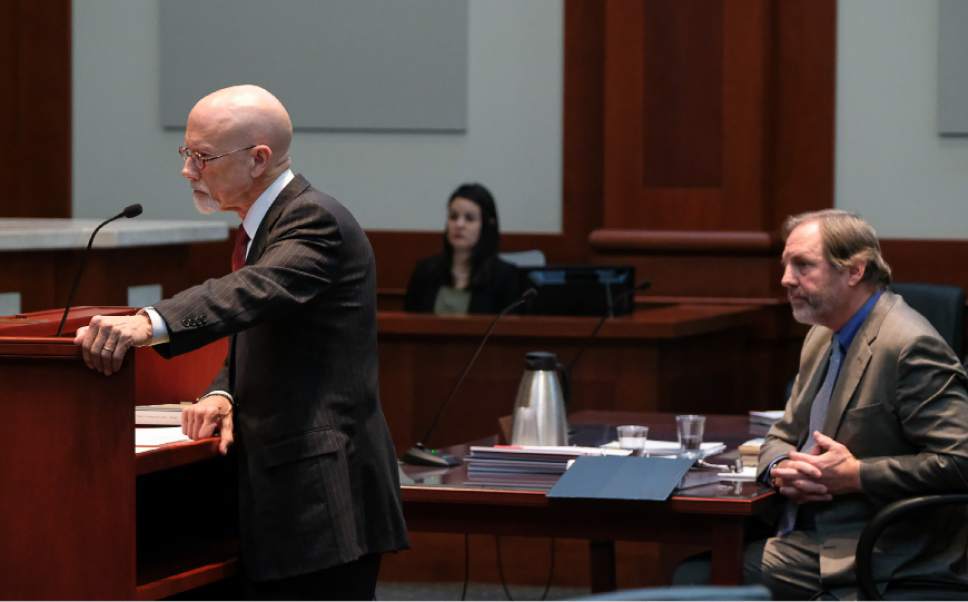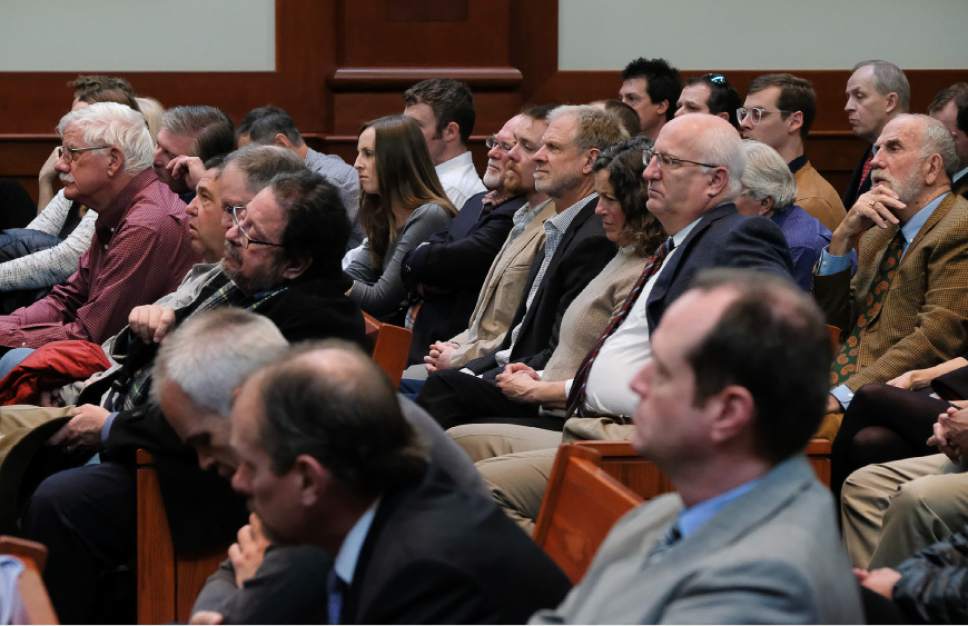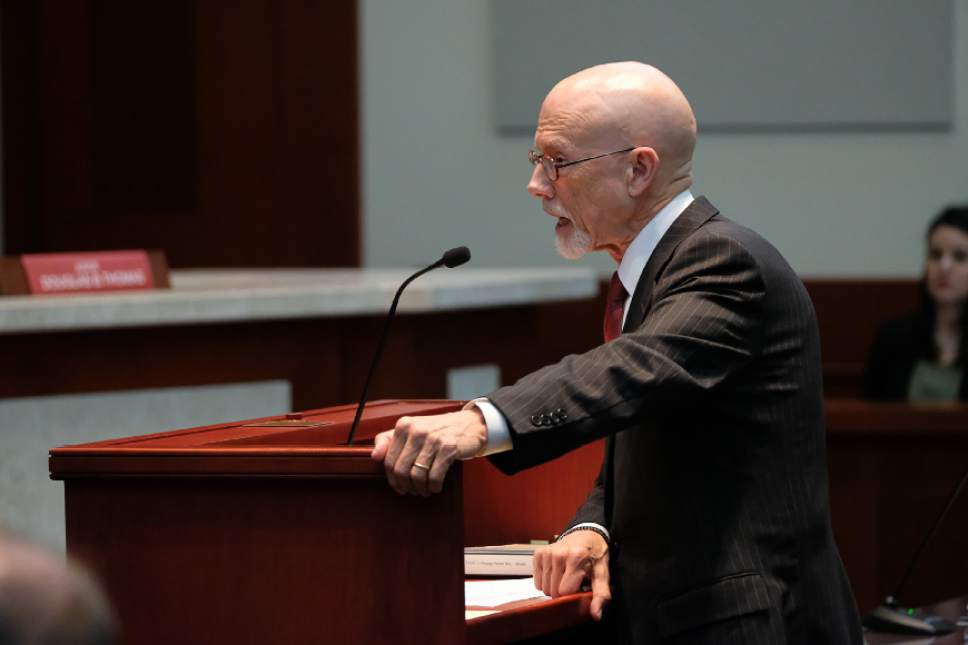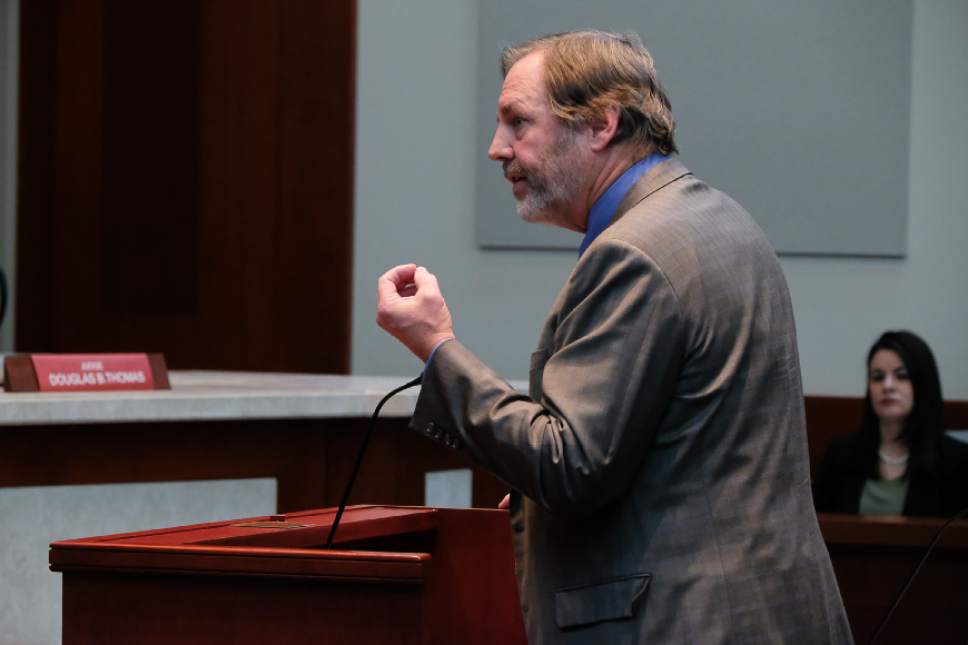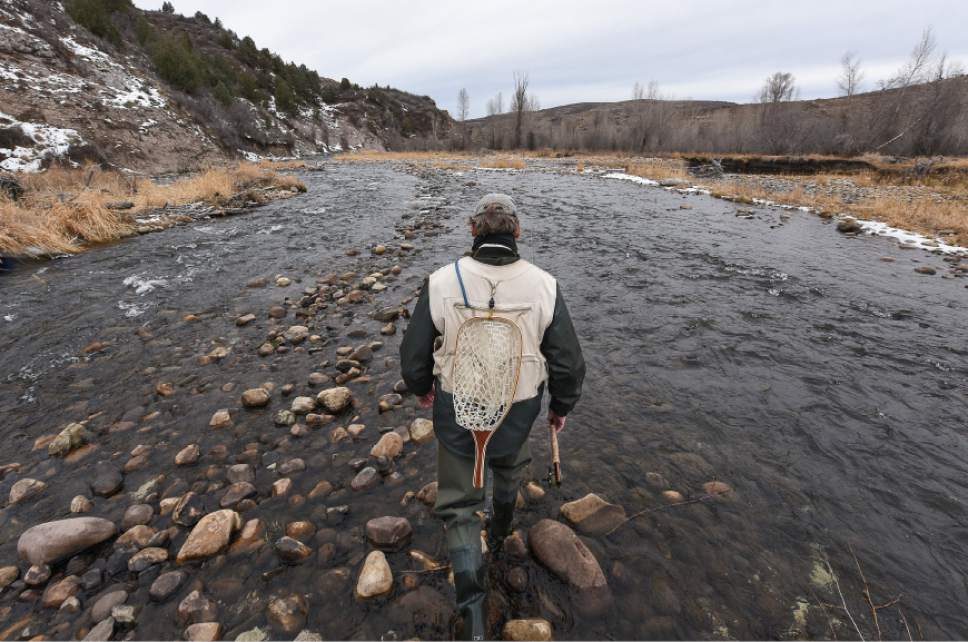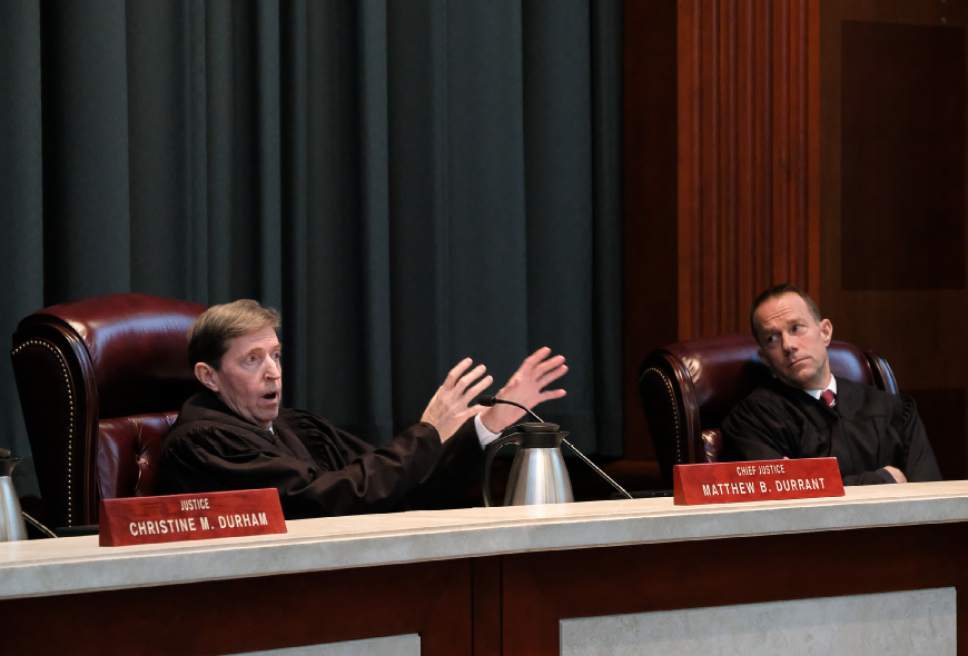This is an archived article that was published on sltrib.com in 2017, and information in the article may be outdated. It is provided only for personal research purposes and may not be reprinted.
A controversial law limiting public access to streams came under scrutiny by the Utah Supreme Court on Monday as justices weighed whether the Public Waters Access Act violates the state constitution.
A lower court invalidated the act, passed as HB141 in 2010, because it declares nearly half the state's fishable streams off limits, despite a public easement to these waters enshrined in a common-law principle know as the "public trust" doctrine.
Like a pendulum, the Utah debate over stream access has swung back and forth for the past decade, with the courts siding with access and the Legislature siding with property rights.
It was unclear Monday when the high court might rule.
Public-access advocates now hold the upper hand with two favorable court rulings, one overturning HB141 and another expanding the historic circumstances under which a streambed is deemed state property to include statehood-era log drives.
"These are difficult questions. You have to balance private property interests against public interest in the waters," Associate Chief Justice Thomas Lee told the lawyers assembled Monday in the Supreme Court chambers as he leveled some of the bench's toughest questions.
Justices heard back-to-back arguments on appeals brought by affected property owners in the two rulings. These cases arose from a 2008 decision in which the high court declared that a public easement extended to streambeds crossing private ground.
Lawmakers took that decision as an invitation to establish rules of access and approved HB141, which deepened the controversy by placing severe restrictions on access.
The Utah Stream Access Coalition, a group of pro-access anglers equipped with a phalanx of skilled pro bono attorneys, mounted a full-scale legal assault on two fronts. The group filed companion lawsuits focusing on fishable stretches of the Provo and the Weber rivers, where upper reaches wind through private land.
Coalition lawyers argued that the public holds a historic right of access to these waters, which are owned by the public even if the streambeds are private.
"The easement is rooted in the Utah Constitution," argued Craig Coburn, a lawyer for the coalition. "The waters of this state are gifts of providence, and as gifts of providence, the public has a right to use that until they are further appropriated."
But the Utah law is not tossing out the easement, just regulating it for the greater good, according to Utah Deputy Solicitor General Stanford Purser.
"The purposes of the act was to balance the public's interests, which are sometimes competing. This state has always strived to be a good steward of water," Purser said. Constraining access helps avoid "the tragedy of the commons" by enabling property owners greater latitude for managing streams.
"That not only has benefits for their property," Purser argued, "but it flows up and down the river."
Stream-access lawyers scoffed at that logic, arguing that the law regulates the public easement out of existence.
"The anglers have the greatest vested interest at stake," Coburn said. "This easement respective of the [Public Waters Access] Act, basically took 2,700 miles, 42 percent of all fishable streams out of the public inventory, so it didn't balance anything."
But Lee emphasized that property owners also have a lot at stake, and he wondered whether the law struck a reasonable balance by allowing for "incidental contact" with the streambed as anglers float by on boats.
"When it comes to standing in the streambed or walking up and down the bank," Lee said, "you are infringing on a core property right, and that's the right to exclude."
Indeed, property rights advocates fear that the current lower court rulings cloud property titles for the land crossed by fishable streams and reduce property values because landowners lose a degree of control. These rulings "upset settled expectations" and add a troubling level of uncertainty, said Randy Parker, CEO of the Utah Farm Bureau Federation.
"If people are walking along your stream, and if you have cattle in there, who has the safety and security obligation?" Parker said to The Salt Lake Tribune. "We are very concerned about that."
However the court rules, the decision will set a landmark.
"It's all about your rights and future generations' rights to use a resource that is natural," said Chris Barkey, an angler active with the access coalition. "Property rights have to be balanced, and it's about time the courts tell them what their boundaries are. These are wealthy landowners. They want to make money off the public's back. The public pays for the flood mitigation, the dams, the stocking [of fish], the habitat improvements."
In the Weber case, justices heard arguments over whether the 19th century practice of floating logs and railroad ties met the definition of "navigabilty." A lower court ruled that it did, so the bed of the 1-mile river stretch in question is owned by the state.
The attorney for the property owners, Michael Zimmerman, argued that the lower court judge misapplied a longstanding standard that requires trade and travel on the river in its normal condition. Moving wood for three weeks a year during spring runoff doesn't cut it, he said.
"Boat travel is a central element for navigability," argued Zimmerman, a former chief justice. "It all goes to commercial utility as a highway of commerce for a stream. Watercraft analysis is always essential."
Access coalition lawyer Cullen Battle, however, said the upper Weber at the time of Utah statehood in the 1890s was a principal conduit of transport.
"If [floating] had not been allowed, the railroad would not have gotten their ties and the mines would not have gotten their cord wood for charcoal," Battle said. "The roads we had back then were so few and so lousy, the only way to get the products to market was to float them."
Even in the early days of statehood, Battle noted, log drives were controversial and, at times, triggered conflicts among property owners.
And although ranchers and farmers "argued about damage to irrigation structures," Battle told The Tribune, "they never argued ownership. We conveniently forget about all that. These guys have been pretending all this time it is private property."
Brian Maffly covers public lands for The Salt Lake Tribune. Brian Maffly can be reached at bmaffly@sltrib.com or 801-257-8713.
Twitter: @brianmaffly


